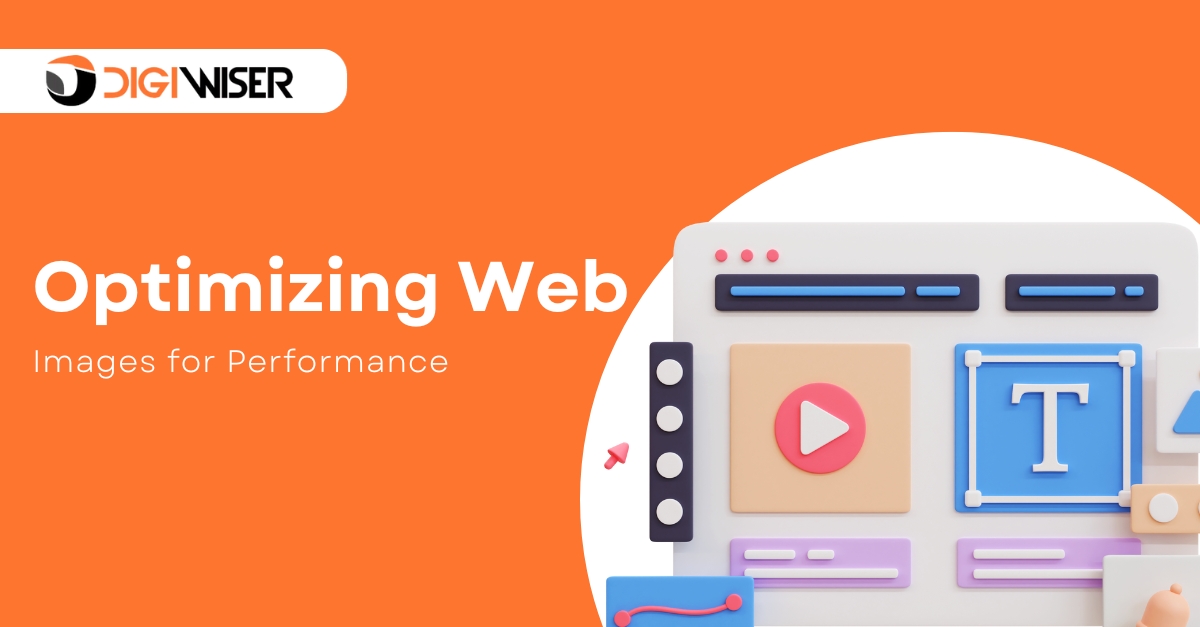
In the fast-paced digital world, where attention spans are shorter than ever, the need for a lightning-fast website cannot be overstated. One crucial aspect that often goes overlooked in this pursuit of speed is image optimization. In this blog post, we’ll explore why optimizing web images is paramount for web performance, delve into the repercussions of slow-loading images on both user experience and SEO, and, most importantly, equip you with practical tips to enhance your website’s image optimization.
Slow-loading images can be the Achilles’ heel of any website. They lead to frustratingly long loading times, which can cause users to abandon your site in favor of a faster one. Moreover, from an SEO perspective, search engines like Google take website speed into account when ranking search results. Slow websites often find themselves lower down the search results hierarchy, which can significantly impact your online visibility and traffic.
The purpose of this blog post is to provide you with a comprehensive guide on how to optimize web images effectively. By the end of this post, you’ll be equipped with the knowledge and tools needed to ensure that your website’s images load swiftly, enhancing user experience, SEO ranking, and overall web performance.
Choosing the Right Image Format
When optimizing web images, the journey begins with selecting the appropriate image format. There are several image formats to choose from, including JPEG, PNG, GIF, and the newer WebP format. Each format comes with its own set of characteristics and use cases.
JPEG is a versatile format known for its ability to compress images while maintaining good quality, making it an excellent choice for photographs.
PNG is favored for its lossless compression, making it suitable for images with transparency, such as logos and icons.
GIF is ideal for simple animations, though it has limitations regarding color depth and image quality.
WebP is a modern format that combines the best of both worlds: it offers both high-quality compression and smaller file sizes.
Choosing the right format is critical, as it impacts not only image quality but also the load time of your web page. Understanding the strengths and weaknesses of each format will help you make informed decisions.
Resizing and Scaling Images
Resizing and scaling images is a fundamental step in optimizing web images for performance. It ensures that images fit appropriately within the layout of your website and reduces unnecessary data transfer.
Responsive web design is all about adapting to various screen sizes and devices. To achieve this, the use of responsive images and the srcset attribute is essential. These techniques allow you to serve the right image size to different devices, optimizing both image quality and load times.
This code example demonstrates how to use the srcset attribute to specify multiple image sources and sizes based on the viewport width.
In the next section, we’ll delve into compression techniques, another vital aspect of image optimization, to further reduce file sizes and improve web performance.
Compression Techniques
Image compression is a cornerstone of image optimization. It involves reducing the file size of images while maintaining an acceptable level of visual quality. There are two primary types of image compression: lossless and lossy.
Lossless compression reduces the file size without sacrificing image quality. It’s suitable for images where every detail matters, like diagrams and screenshots.
Lossy compression, on the other hand, achieves higher compression ratios by sacrificing some image quality. This is commonly used for photographs and images where slight quality loss is acceptable.
To implement image compression, you can leverage various tools and services such as ImageOptim and TinyPNG. These tools automatically compress images without compromising quality.
Below is an example illustrating the impact of compression on image file sizes:
Original Image: 2.5 MB
Compressed Image (lossy): 500 KB
Compressed Image (lossless): 1.2 MB
As you can see, proper compression can significantly reduce the load time of your web pages while maintaining acceptable image quality.
Lazy Loading
Lazy loading is a technique that defers the loading of images until they are needed. This means that images below the fold, or not immediately visible, won’t load until the user scrolls down to view them. Implementing lazy loading can have a substantial impact on page load times.
To implement lazy loading, you can use the loading=”lazy” attribute:
Alternatively, JavaScript libraries like LazyLoad provide more control over lazy loading, allowing you to fine-tune the behavior to suit your website’s needs
Website Development Services USA are instrumental in crafting websites that captivate and engage users. However, the journey doesn’t end at design and development; it extends to optimization. Image optimization, as we’ve explored, is an integral part of this process..
Image Formats for Icons and Illustrations
In the realm of web development, icons and illustrations play a pivotal role in conveying information and adding visual appeal to a website. When it comes to these elements, vector formats like SVG (Scalable Vector Graphics) reign supreme. SVGs have gained widespread popularity for several compelling reasons.
SVGs are vector-based, which means they are defined mathematically, not as a grid of pixels. This attribute gives them a significant advantage: scalability. Regardless of the screen size or resolution, SVGs maintain their sharpness and clarity. This is particularly crucial for responsive web design, where icons and illustrations need to adapt gracefully to different devices.
Another key benefit of SVGs is their small file size. Unlike raster formats (e.g., JPEG or PNG), SVGs are lightweight because they store graphics as a series of instructions rather than pixel data. This efficiency results in faster loading times, making them an ideal choice for web performance optimization.
When it comes to using SVG images in web development, the process is relatively straightforward. You can embed SVG directly in your HTML code using the <svg> element, or you can reference an external SVG file. Within your SVG code, you can define shapes, colors, and even add animations using CSS or JavaScript. The versatility of SVGs makes them suitable for everything from simple icons to intricate illustrations.
Using Image CDNs
To further enhance web performance and global accessibility, consider the power of Content Delivery Networks (CDNs) in your image optimization strategy. CDNs are a network of servers distributed across multiple global locations. They work by caching and serving website assets, including images, from the server nearest to the user’s geographical location. This proximity dramatically reduces latency and load times.
When it comes to image optimization, CDNs can be a game-changer. They not only ensure that your images load quickly but also offer dynamic image resizing capabilities. This means you can request images in specific dimensions and formats on-the-fly, saving bandwidth and further improving load times.
Some of the notable image CDNs include Cloudinary and Imgix. These platforms provide easy-to-use interfaces for uploading, managing, and delivering images at optimal speeds. They also offer features like image optimization, automatic format conversion, and responsive image delivery.
Image Metadata and EXIF Data
While image optimization largely focuses on file size and loading speed, it’s essential not to overlook image metadata, specifically EXIF data. EXIF data contains information about the image, such as the camera settings, date, and even location where the photo was taken. While this data can be valuable, it can also contribute to larger image file sizes.
Cleaning image metadata is vital not only for privacy but also for performance. When you strip EXIF data from images using tools like ExifTool or online services, you can significantly reduce the file size. This reduction translates to faster loading times and a smoother user experience.
Browser Support and Testing
In the diverse landscape of web browsers and devices, cross-browser compatibility is paramount. It’s essential to ensure that your image optimizations work seamlessly across various platforms and screen sizes.
To achieve this, rigorous testing is necessary. You should test your image optimizations across different browsers, including popular options like Chrome, Firefox, Safari, and Edge, as well as on various devices, such as desktop computers, tablets, and smartphones. Browser developer tools come in handy for performance testing and debugging. They allow you to inspect network requests, monitor resource loading, and identify potential issues.
Conclusion
In conclusion, image optimization is a fundamental aspect of web development that significantly impacts both user experience and SEO. As we’ve explored various techniques and strategies, including the use of vector formats like SVG, Content Delivery Networks (CDNs), metadata cleaning, and cross-browser testing, you now have a comprehensive toolkit for optimizing your website’s images.
Incorporating these practices into your web development workflow will undoubtedly lead to faster-loading websites with visually stunning imagery. Remember that a well-optimized website not only keeps users engaged but also earns favor with search engines, improving your site’s visibility in search results.
As you embark on your journey to create high-performing websites, consider reaching out to Mobile app consultancy for expert guidance and solutions tailored to your specific needs. With the right strategies in place, your web projects will shine brighter than ever before.

The Financial Side of Moving: Budgeting and Saving Tips

Making Memories: International Rakhi Celebrations and Traditions

What Makes the #1 Ranked Email Data Service Essential for Your Business?

Pre-Requisites Before Applying for an Instant Personal Loan

Embrace the Magic of Turkey: An Unforgettable Visit

Why Short Codes Are a Powerful Tool for SMS Marketing?

The Comprehensive Manual on the Benefits of Takip88 Apk

Mastering Organic Instagram Growth: Proven Strategies










